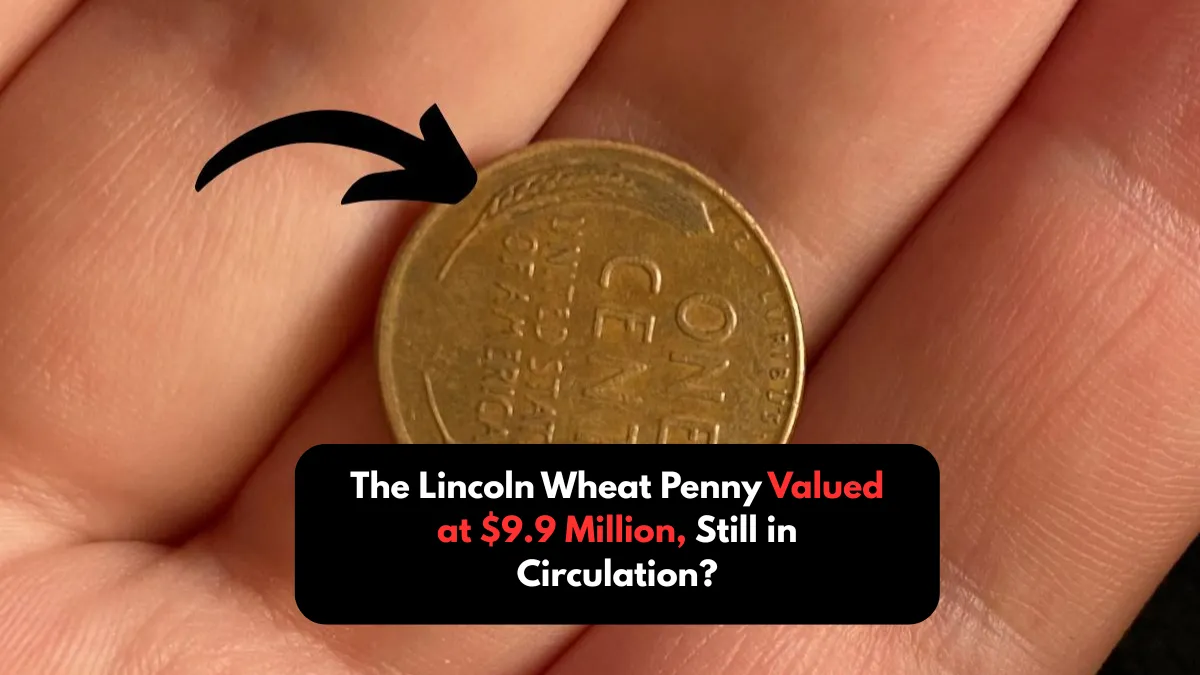When you think about pennies, you probably don’t imagine they could be worth much. Most of us toss them into jars, forget about them, or simply leave them lying around. But what if we told you that a Lincoln Wheat Penny could be worth $9.9 million? It’s true, and it’s a thought that has collectors everywhere on the lookout for rare, valuable pennies that could still be floating around in circulation.
Let’s dive into why this particular penny is so valuable and how you might find one.
What Is a Lincoln Wheat Penny?
The Lincoln Wheat Penny was first minted in 1909 to celebrate President Abraham Lincoln’s 100th birthday. The coin features Lincoln’s portrait on the front and two stalks of wheat on the back, which is how it got its name. It was produced until 1958, when the design was replaced by the famous Lincoln Memorial design.
While most Lincoln Wheat Pennies are worth just a few cents, some of the rarer ones can be worth a small fortune—like the $9.9 million penny.
Why Is This Lincoln Wheat Penny Worth So Much?
The Lincoln Wheat Penny that could be worth $9.9 million is likely a rare 1943 copper penny. During World War II, copper was needed for the war effort, so the U.S. Mint produced pennies out of steel. However, a small number of copper planchets (blanks) were accidentally mixed in, and a few copper pennies were minted that year instead of the steel ones.
Today, these 1943 copper pennies are some of the rarest coins in the world, with only around 20 to 40 known to exist. Their rarity and the historical significance of the wartime mix-up make them incredibly valuable, and one of these pennies has been sold for as much as $9.9 million in a private sale.
What Makes This Penny So Special?
Several factors come together to make certain Lincoln Wheat Pennies worth so much:
- Rarity – Only a few of these copper pennies were accidentally minted in 1943, making them extremely rare.
- Minting Errors – Mistakes like using the wrong metal for the penny add to its value. Coins with these types of errors are considered valuable by collectors.
- Condition – The better the condition of the penny, the higher its value. Coins in mint or near-mint condition are the most sought after.
- Historical Significance – The story behind these error coins—the impact of World War II—adds an extra layer of value.
Could You Have One?
While finding a $9.9 million penny is unlikely, it’s not out of the question. If you’re checking your pennies, here are a few things to look for:
- Check the Year: The most valuable one is the 1943 copper penny. If the penny is from this year, it could be worth checking.
- Use a Magnet: Regular 1943 steel pennies will stick to a magnet, but copper pennies won’t. If the penny doesn’t stick to a magnet, it might be the valuable copper version.
- Look for Other Rare Years: There are other valuable Lincoln Wheat Pennies, like the 1909-S VDB and the 1914-D, which are highly sought after.
- Examine the Condition: If the coin is in great condition and has sharp details, it could be more valuable than a typical penny.
What Should You Do if You Find One?
If you think you’ve found a valuable Lincoln Wheat Penny, don’t clean it, as cleaning can lower its value. Instead:
- Handle it carefully – Use gloves to avoid damaging the coin.
- Get it professionally graded – Take the coin to a reputable coin grading service like PCGS or NGC to have it authenticated and graded.
- Consult an expert – If it’s confirmed to be valuable, consider reaching out to a coin dealer or auction house to sell it.
Final Thoughts
While the chances of finding a $9.9 million Lincoln Wheat Penny might be slim, the idea of such a discovery is enough to make coin collectors and everyday people check their spare change more closely. Rare coins like the 1943 copper penny are out there, and with a little luck, you might just stumble upon one.
Keep your eyes open—you never know when a little penny could be worth a small fortune!
